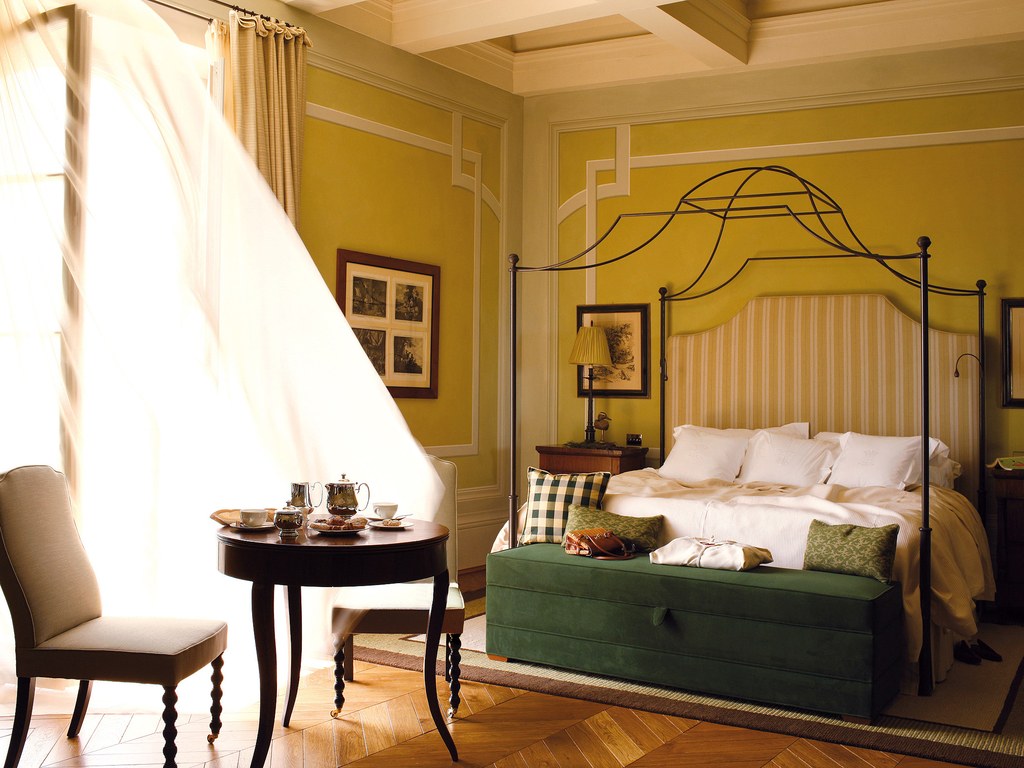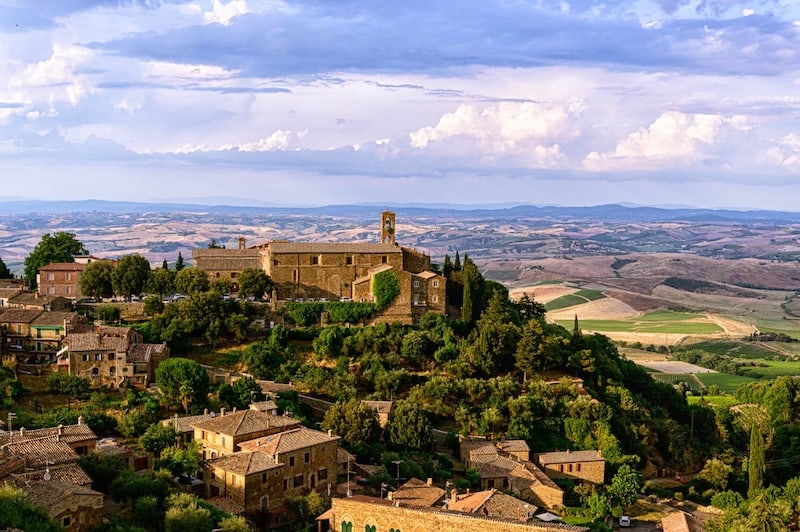Book your visit
07/03/2019
by Ondine Cohane
Here’s how to drink —and eat— your way through the region.
From up-and-coming Brunellos to tucked-away Super Tuscans, we spotlight the region’s secret treasures, and provide intel on where to eat—and stay—en route.
Brunello, Montalcino
Labels like Banfi and Casanova dei Neri put this wine area of Brunello on the international map, but one of the true pleasures of the region is discovering new vintages from up-and-comers like Podere dei Ripi, owned by a member of the Italian coffee empire, Illy. The estate fulfills the quest for both sustainable and delicious wines, and the cantina, with a massive submerged dome of handmade bricks, has become an architectural marvel of the area. Family-run producers (who have smaller yields but exciting results) include Brunello Tornesi, whose family has owned the land here since 1865, and who became a forerunner in the Brunello movement. The producer duo also exemplifies the father-daughter combo, which seem to be an increasing trend in the Italian wine world.
Eat: Head to Montalcino’s new Locanda Drogheria Franci. In addition to its wonderful wine list, which has made it a favorite for local producers, and more traditional Tuscan fare like tagliatelle with white truffles, the spot has lighter options, too—think quinoa salad with raw vegetables, mint, and sunflower seeds. (Note: they also have three suites right upstairs if you don’t want to drink and drive.)
Stay: Originally opened by the Ferragamo family, Castiglion del Bosco is now part of the Rosewood portfolio, and continues to expand its offerings—archery, horseback riding, golf, and vineyard tours are among the amenities.
P.S. The tasting room in the fortress of Montalcino is the only place you can sample most of the area’s producers in one spot, and the ramparts are perfect for entertaining the non-drinkers in tow.

Vino Nobile, Montepulciano
Brunello may get more international wine press than nearby Vino Nobile, but the vintage, made just outside the Val d’Orcia’s Montepulciano, is worth more than just a passing glance. In fact, some might say that this version of Sangiovese is an easier everyday drinking wine than its nearby cousin; try an especially good one at vineyards like Salcheto. In addition to the excellent sulfite-free vintages, the emphasis here is on being sustainable—from how the estate uses “off-grid” energy to its ecological bottles and state-of-the-art cantina. Tenuta Valdipiatta, a family-run vineyard just outside town, is also worth a visit; in addition to traditional tastings, the estate also hosts a winemaking class.
Eat: Daria Capelli, the owner of La Porta in tiny Monticchiello, is a fervent oenophile, and will lead you through her favorites without even glancing at her list. Put your selection in her hands, and don’t miss a plate of the tagliatelle with white truffles at a table on the outside terrace, which overlooks the sweeping valley.
Stay: Getting to Monteverdi Tuscany, up in the hills overlooking the valley, may not be ideal in terms of winding roads post tastings, but the boutique-hotel-meets-medieval-hamlet has an impressive wine bar and cantina right on site if you want to sample some of the best right in your own room.
P.S. In late August, Montepulciano’s Bravio delle Botti involves buff men from different quartiere(neighborhoods) racing heavy wine barrels up the medieval streets to the central square—followed by rousing feasts and plenty of Vino Nobile, naturally.
Chianti, Siena, Florence, and in between
This region, which comes under the umbrella designation of Chianti, was one of the first Italian wines to go global, and encompasses a whole host of types of vino, from straw-wrapped carafe-worthy inexpensive productions, to some of the world’s best at legendary vineyards like Mazzei and Fontodi. At spots like Castello di Ama, the vintages come alongside a museum-worthy art collection, while around medieval villages like Panzano, newcomers include Tenuta degli Dei, helmed by a Cavalli family member (yes, that Italian fashion house) and with increasingly sought-after organic blends.
Eat: Butcher Dario Cecchini has become a legend for good reason: he is the king of the bistecca alla Fiorentina—a Tuscan must—and has the kind of personality that can only be described as worthy of Italian theater.
Stay: Vitigliano Relais and Spa debuted in 2015, and gets top marks for mixing details like huge rain showers and standalone tubs with original Tuscan architecture; its impressive wine cantina, housed in the foundations of the main building, makes evenings spent on site that much better.
P.S. Picturesque small villages in the Maremma, like Scansano and Pitigliano, are less well known than their Chianti counterparts, but produce some interesting vintages, like Morellino di Scansano, all their own.

Super Tuscans, Bolgheri
The hill town of Bolgheri, with the Mediterranean sparkling behind the vineyards, is known as the entryway to some of Tuscany’s most famous Super Tuscans like Sassacaia and Ornellaia, among others. Too, wines like Aia Vecchia and Caccia al Piano, also a family-owned producer, show what makes this region so compelling, both with unbeatable locations in the gentle countryside, and vintages that are a fraction of the price of the big names nearby.
Eat: Before or after your tasting, get a sense of how deep the wine culture runs at spots like La Pineta. From the outside, the seafood-centric spot looks like many of the beach clubs that line the Tuscan coast, but it’s actually a Michelin-starred establishment with an encyclopedic list of vintages and melt-in-your-mouth crudo.
Stay: Close to the sea, many of the area’s best vineyards, and Bolgheri itself, Relais Sant’ Elena, is the perfect mix of romantic with authentic—we love the poolside Jacuzzis with their sunset views, and the greenhouse-turned-breakfast-room serving up locally sourced ingredients, often from their own farm estate.
P.S. Looking for a different sort of drink after a day of tastings? The new aperitivo bar, il Sal8, serves up artisanal cocktails using ingredients from the estate’s garden, as well as craft beers, and local wine favorites.